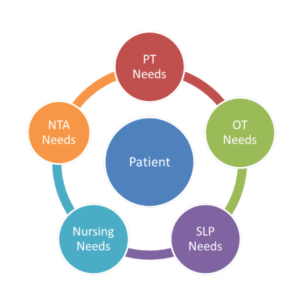Hospital readmissions won’t improve without better transitions of care
Healthcare needs a three-pronged approach to reduce hospital readmissions, says Terrence O’Malley, CMD, Partners HealthCare System, who presented the topic at the 2012 Long-TermCare/Post-Acute Care Health IT Summit last week. Fixing what’s broken in the care chain will require improving systems of care delivery, data exchange and patient involvement simultaneously.
“Readmissions are not an accident. They’re a product of the system we have in place,” O’Malley says. “Every silo in the chain of care for a patient is driven by different financial incentives. None of them line up, and every part of the system is maximizing its [own] revenue.”
Readmissions are the natural outcome of a fragmented care delivery system, O’Malley adds, quoting Paul Batalden, MD, professor at The Dartmouth Institute for Health Policy and Clinical Practice: “Every system is perfectly designed to get the results it gets.”
Recent data indicates that healthcare has plenty of work to do in reducing repeat patients and the “emergency department revolving door” syndrome. Three years ago, about 20 percent of Medicare seniors were readmitted to a hospital within 30 days of discharge, and 34 percent after 90 days, according to Congressional Research Service’s 2012 report “Addressing Medicare Hospital Readmissions.” But 50 percent of readmits occurred a full year after discharge, a statistic that garnered plenty of attention at the Centers for Medicare & Medicaid Services (CMS), O'Malley says.
The Care Transitions Quality Improvement Organization Support Center (QIOSC) attributes most readmissions to insufficient health condition management, improper medication regimens or the inappropriate use of emergency rooms.
But O’Malley says the healthcare delivery system has realized many other lessons:
- Many surgical readmissions are related to medical issues, not surgical ones.
- Many medical readmissions are caused by medication management issues.
- Every chronic illness has a behavioral component.
- Teaching patients their care plan at the point of discharge doesn’t really work.
- When anything along the care chain breaks down, the final common pathway is the emergency room.
Starting next year, CMS will begin to target the three chronic conditions driving the Medicare readmission penalty phase: Chronic Heart Failure, heart attacks and pneumonia. The penalties for readmissions based on these illnesses will increase each year through 2015, giving the readmission problem an additional financial aspect.
The key to reducing readmissions is better transitions of care, O’Malley says. “Transitions touch every other part of the system,” he says. “At Partners, we have 150,000 discharges per year from our hospital, and we estimate that we have 10 million transitions of care.”

Pamela Tabar was editor-in-chief of I Advance Senior Care from 2013-2018. She has worked as a writer and editor for healthcare business media since 1998, including as News Editor of Healthcare Informatics. She has a master’s degree in journalism from Kent State University and a master’s degree in English from the University of York, England.
Related Articles
Topics: Accountable Care Organizations (ACOs) , Articles , Executive Leadership , Medicare/Medicaid , Nutrition , Regulatory Compliance










